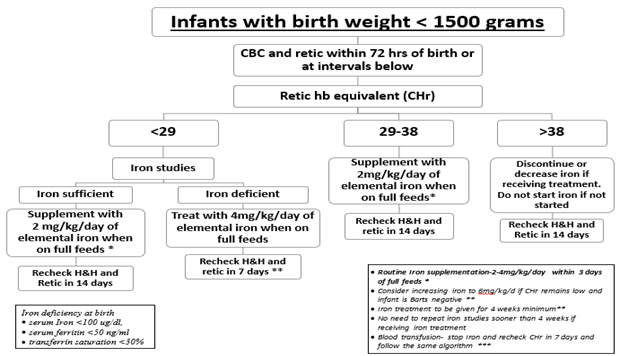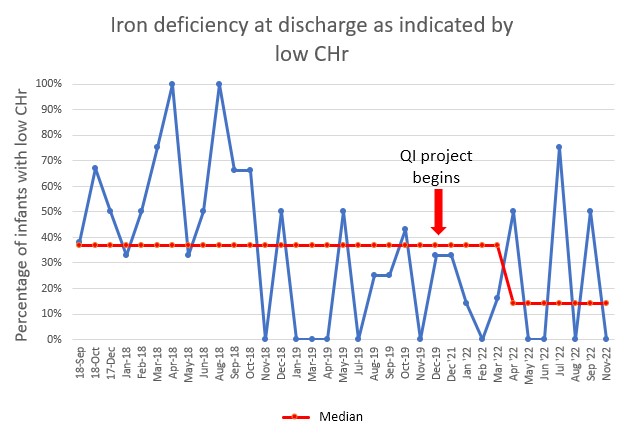Neonatal Quality Improvement
Neonatal Quality Improvement 5
192 - A quality improvement project to improve iron status at discharge in very low birth weight infants
Publication Number: 192.439

Geetika Kennady, MD
Neonatologist
Nemours Children's Health/ Thomas Jefferson University Hospital
Swedesboro, New Jersey, United States
Presenting Author(s)
Background:
Iron deficiency can lead to irreversible neurocognitive impairment. Reticulocyte hemoglobin content (CHr) is a reliable marker of iron deficiency. On a retrospective chart review, we found that 37% of our very low birth weight (VLBW) infants had low CHr suggesting they were iron deficient.
Objective:
Using CHr screening, we aimed to reduce iron deficiency in VLBW infants at discharge from 37% to 15% in 12 months using the Model for Improvement.
Design/Methods:
We assembled a multi-disciplinary team from our intensive care nursery in October 2021. Our current state of iron deficiency management was evaluated retrospectively. A driver diagram was then created and used to develop a standardized guideline for screening and management of iron deficiency. This guideline was implemented and modified using Plan-Do-Study-Act cycles. Our primary outcome measure was the percentage of VLBW infants with iron deficiency at discharge as indicated by CHr. Process measures monitoring the adherence to the guideline were followed, and the incidence of iron overload and the number of transfusions per patient were followed as balancing measures. A run chart was created and statistical process control (SPC) charts will be used to evaluate for special cause variation.
Results:
The percentage of patients with a low CHr at discharge significantly decreased from 37% to a median of 14%. There were no cases of elevated CHr among patients receiving iron supplementation at the time of discharge.
Conclusion(s):
A standardized guideline utilizing CHr decreased the rate of iron deficiency at discharge in VLBW infants without increasing iron overload. CHr can be used to guide iron supplementation in VLBW infants to improve their iron status at the time of discharge..png)


